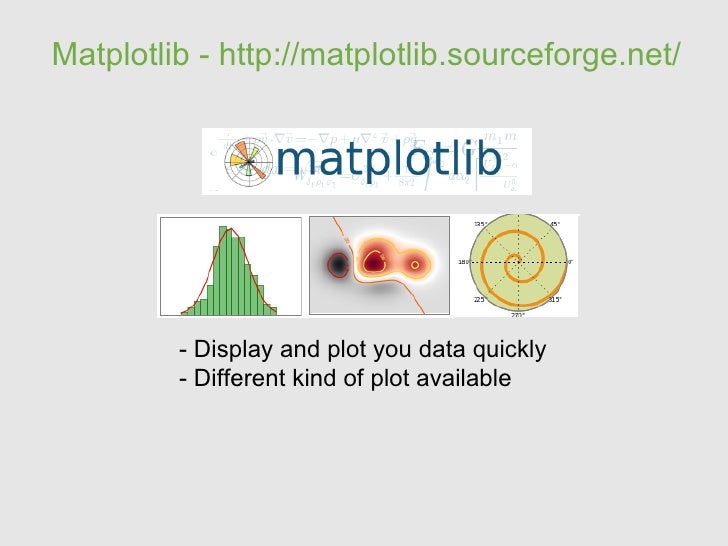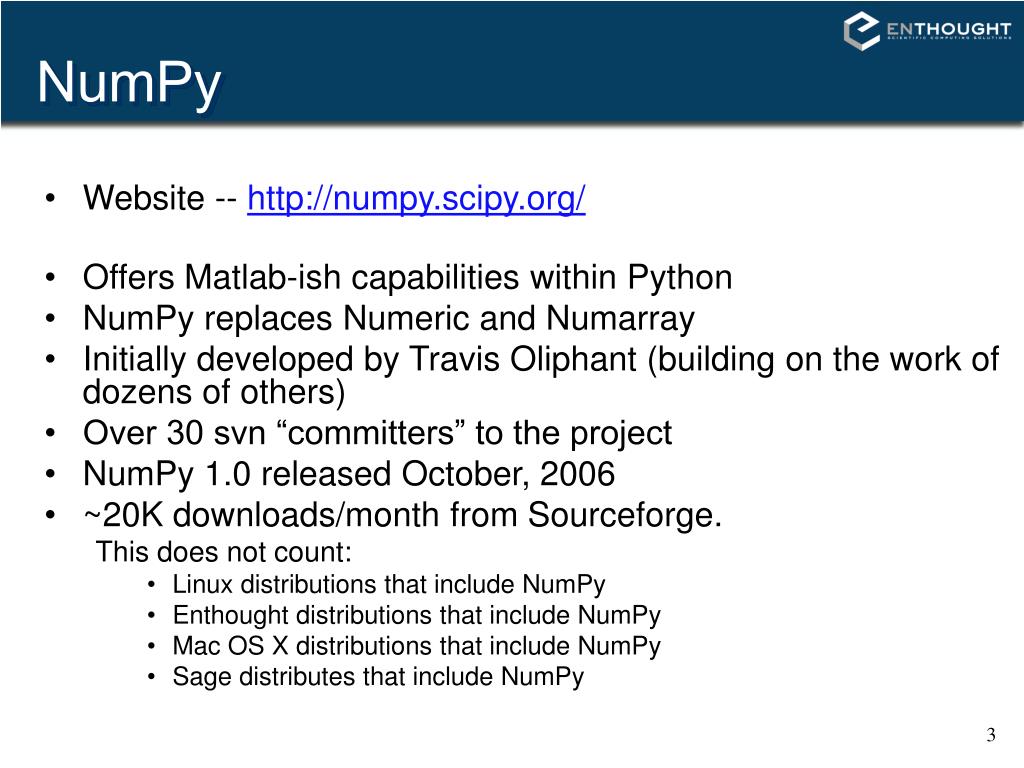
#Scipy vs numpy code#
Part of the can be seen here and this is a GitHub repository where you can find a Jupyter Notebook and see some of the code in action. The applications that the library amassed are significantly varied, from being used in high school education to power field changing research, like the 2017 Physics Nobel Prize winners “for decisive contributions to the LIGO detector and the observation of gravitational waves”.

#Scipy vs numpy how to#
Their GitHub repository has information on how to help contribute to SciPy and what are their plans for the future. Currently it is distributed under the BSD license and has it's development supported by an open community of supporters. Version 1.0.0 had a total of 121 contributors. With this, SciPy runs on top of the numeric array data structure provided by NumPy. With a growing number of extension modules, and the rising necessity for a more complete environment for scientific and technical computing, in 2001 Travis joined efforts with Eric Jones and Pearu Peterson to create version 0.1. One of it's creators, Travis Oliphant, was also the creator of Numpy, which merged Numeric and Numarray data. The code is written by scientists, for scientists, giving us a set of easy to use tools. Now they’re at version 1.7.3, and make periodic updates. Version 0.1 was first written back in 2001, with version 1.0.0 only being released in 2017. Is there anything obvious I might be missing (maybe something along the lines of forgetting to call import_array())? The code also spans several files, but I have correctly added the necessary defines for the PyArray_API value to be set properly. The farthest I could get into the function before crashing, as far as I can tell, was the call to dtypemeta_wrap_legacy_descriptor(). If I setup the PyArray_Descr with incorrect information I do receive error messages informing me of the ill-formed descriptor (i.e.

SciPy, NumPy, and Pandas correlation methods are fast, comprehensive. These statistics are of high importance for science and technology, and Python has great tools that you can use to calculate them. Correlation coefficients quantify the association between variables or features of a dataset. I took a look at the source code for PyArray_RegisterDataType to see if I could narrow down what is causing the crash. NumPy, SciPy, and Pandas: Correlation With Python.

#Scipy vs numpy full#
As an instance of the rvdiscrete class, binom object inherits from it a collection of generic methods (see below for the full list), and completes them with details specific for this particular distribution.
However, it seems if I copy and paste the example up to where rational is added via PyArray_RegisterDataType, PyArray_RegisterDataType continues to crash. binom < object> source A binomial discrete random variable.I tried following an example from within the Numpy library (rational_tests.c ) to see if I could narrow down what was causing the program to crash.

After calling the function Python crashes. After trying and failing for a bit to get the dtype working I narrowed down the problem to when I call PyArray_RegisterDataType. is supported for IronPython and available for ACT. Libraries are in ANSYS Installation directory : C:\Program Files\ANSYS Inc\v182\Addins\ACT\bin\Win64\Ĭlr.AddReferenceToFileAndPath("C:\\Program Files\\ANSYS Inc\\v182\\Addins\\ACT\\bin\\Win64\\")įrom import *įrom am trying my hand at creating a custom dtype from within Python's C API.
#Scipy vs numpy install#
NumPy requires the signal module to build and install as a package IronPython's lack of this and other modules makes it impossible to import. For example, Python includes the signal module while IronPython does not. NumPy on its own is incompatible with IronPython due to unsupported module dependencies. The normal NumPy and Scipy packages for CPthyon will not work with the version of IronPython that we ship with Ansys.


 0 kommentar(er)
0 kommentar(er)
